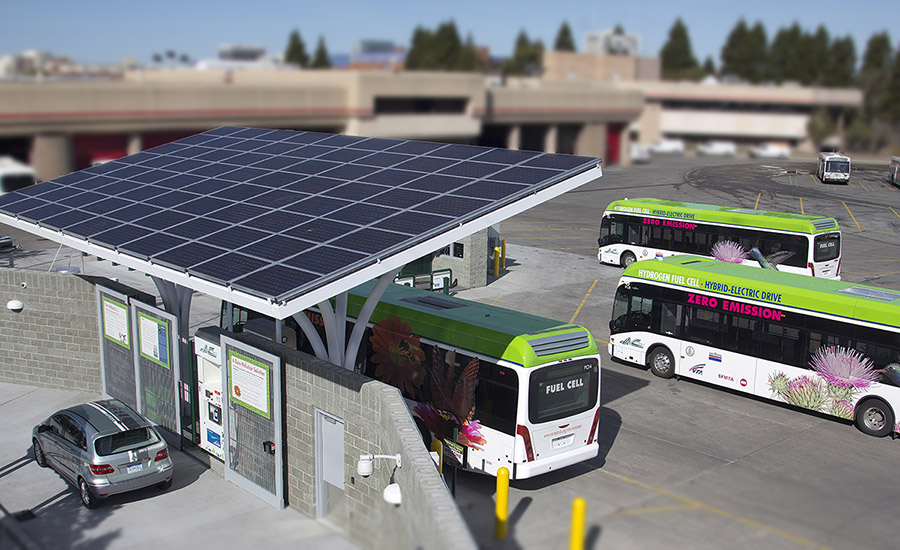
California has ambitious goals for growing the number of fuel cell vehicles, and most eyes are focused on the passenger car market right now. But we shouldn’t forget that fuel cell buses have a major and strategic role to play in cleaning our air and reducing greenhouse gases.
In California today, three transit agencies and one university together have 20 fuel cell buses, more than any other state. They operate day-in and day-out and serve tens of thousands of transit riders. Altogether, these early adopters have provided 15 years of service and accumulated more than 2.5 million miles of experience.
And more of these buses are on the way. In the next few years, these transit providers, plus one more university, will take delivery of 33 additional buses and four shuttles. That more than doubles the statewide fuel cell bus fleet.
Of those 33 additional buses, 20 of them are being manufactured by New Flyer, the largest transit bus manufacturer in North America. Most previous fuel cell buses were manufactured in groups of two or less and, with such small numbers, we couldn’t achieve the cost reductions per bus that we need. This 20-bus production run will show that the cost of fuel cell technology is on a downward trend, eventually making it affordable and accessible to most transit agencies.
While we are showing the rest of the U.S. that fuel cell buses offer great range, superior performance, short fueling times, quiet operation, etc., we can’t rest on our laurels. We need to look to the future. And think big.
Fuel cell bus stakeholders in California are already looking to the near future. Early discussions are focused on ambitious targets, such as the goal of putting 250 fuel cell buses on California roads by 2025.
And, lastly, fuel cell buses have a strategic role to play in reducing emissions. They are the early adopters in the heavy-duty category, so the more effort we put into buses and the bus fueling infrastructure, the better the outcome for fuel cell trucks.
California is moving ahead with the launch of the fuel cell car market, but don’t forget: Fuel cell buses will catch up and play an equally important role in reducing greenhouse gas emissions and pollutants.
For more information about fuel cell buses and other vehicles, and to keep up with the latest news, sign up for our newsletter here on the website or follow CaFCP at LinkedIn, Twitter or Facebook.
If you’d like to learn more, check out our fuel cell bus and trucks page.
—Bill Elrick, Executive Director, CaFCP